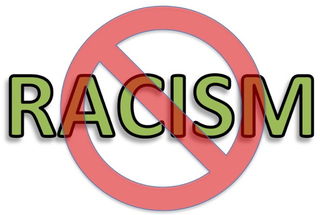Bias
What Well-Intentioned White People Can Do About Racism
Two white psychologists discuss challenging oppression from the inside out.
Posted August 10, 2016
by Jonathan W. Kanter, Ph.D. and Daniel C. Rosen Ph.D., guest contributors
A New Civil Rights Movement

A new civil rights movement is happening, with racial justice at its core. As psychologists who have spent years working in this area with different people in multiple contexts, we have a conviction that there is an important role for applied psychological science in this movement.
This new civil rights movement is going to be very different from the first one. We now have tools like the internet and social media to spread the news of racial violence and human reactions. New technologies also make it easier than ever to network, communicate, and organize. We have a black President. We have scores of activists and organizers, talkers and fighters,scientists and artists, devoted to truth and justice, finding their strengths and
their voices, doing what they do best, sometimes acting with beautiful collective purpose, sometimes acting individually in moments of despair and grief. We have Black Lives Matter at the center of the movement. We have a peaceful movement that is committed to love and empathy and freedom and justice for all people but it is occurring in a society that is legally armed, protected by open-carry laws, misinformed, confused, scared, and dangerous.
The Definition of Racism has Changed

Dr. Jonathan Kanter and Dr. Daniel C. Rosen
The movement has a new language and for many white people this language is foreign. We now talk of intersectionality, whiteness and white privilege, implicit bias, and microaggressions. The very definition of racism has changed. Like in the original civil rights movement, it is easy to view the documented acts of brutality and explicit prejudice and call the perpetrators of those acts “racist!” – comfortably labeling “them” as the problem – but our current psychological understanding of racism forces all white people to (not so comfortably) take a hard look in the mirror, to consider the possibility that the biases and impulses that result in a police officer pulling the trigger on an innocent black man in a moment of doubt reside inside all of us.
Aided by modern science, our understanding of racism is more nuanced and complex today than it was in 1964, and until recently, many of us may not have been told about the changes. Today, intentional, and hateful acts of racism still occur far too frequently, yet we now have much more awareness of how the multiple forms and faces of racism operate even within well-intentioned white people. This definition of racism is challenging, and likely to make many of us uncomfortable. Getting up to speed with racism today is hard work, and it is personal, psychological work that is required.
When our behavior impacts others in harmful ways, we want to know – even if we didn’t intend to hurt someone (or, in fact, were trying hard not to). The challenge of racism today is opening up non-defensively to how we are impacting others, regardless of our intentions. This is not easy, but this is the psychological work that is required of well-intentioned white people. Being a part of the solution, not the problem, starts with understanding and working on ourselves.
We Can Do Better
As two white men, nearing middle-age, living in the progressive, liberal bubble of Seattle, Washington, we witness some typical reactions of well-meaning white people – ourselves, our friends, family, and colleagues to the racist events that keep occurring in our country. Together, we express outrage at what is happening. Such expressions are easy. We may engage in some spirited discussion about this or that, expressing our opinions or sharing facts and news tidbits with each other. Everyone has an opinion. If someone brings up white privilege or institutional racism, we acknowledge it in some superficial way…“Of course, I am so lucky…my daughter goes to a good school…” and so on. Then, at some point in the conversation, despair and hopelessness set in, and we lapse into silence.
This feeling can be profound. While some of us have found ways to meaningfully engage, the vast majority of well-intentioned white people, horrified at what is happening around us, have not. We don’t know what to do. We don’t know how to help.
So we do nothing. We go back to our work and families and lives, and feel lucky that we can.
And yet this doesn’t feel right. That is why we read articles like this one. We seek action. We seek change. We know we can do better.
As psychologists, we look to our field and our science to help answer questions. Here we offer five suggestions, all supported by modern clinical psychological science.
- Learn: Our understanding of “racism” today is very different than “racism” of the past. Learn the new language.
- Accept: Get better at accepting, rather than avoiding, difficult feelings surrounding race.
- Explore: Get curious about your own stereotypes and biases, and learn how to deal with them.
- Commit: Get active and be part of the solution.
- Connect: Take risks to forge real relationships with others who are different from you.
Clicking on the links above will take you to expanded contributions on each of these suggestions.
The five suggestions are written for well-intentioned white people feeling the pain and anguish of what is happening across our country right now. They are suggestions for people wanting to do more, but also who may be feeling defensive – like the rug has been pulled out from under them – because suddenly the finger is being pointed at them as part of the problem.
What Do We Care About?
And, just behind the defensiveness, there is despair, hopelessness, fear, and not knowing what to do. On the opposite side of all of that, however, is what we care about. After all, people don’t become defensive or fearful unless something matters to them. If you are someone who cares about justice, equity, and compassion, then it makes sense that this work can be challenging – something is at stake. That’s what makes it important.
The current moment requires us to move beyond a binary of “racist” and “non-racist” and instead challenges each of us to notice when our actions are out of line with our declared values. This requires feedback from others, and it requires engagement. Rather than simply hiding and running from all of it, our suggestions are rooted in getting real and getting curious.
The forces of change are powerful, and while we can look back in history and see darkness and despair, history also provides plenty of examples of success, of revolution and positive change. It is scary to consider that we are living in one such moment of possibility. Large numbers of people, in our country, right now, are fighting for basic human rights, for freedom, for their lives. The movement is happening. It is not temporary. It is not just a reaction to the rhetoric of Trump and other current events. It was happening before this election cycle and it will continue after it. The movement is not going away. It is too important.
And the result of all of this has not yet been written.
Jonathan W. Kanter, Ph.D., is a Research Associate Professor and Director of the Center for the Science of Social Connection at the University of Washington. Daniel C. Rosen, Ph.D., is Associate Professor and Co-Director of the Center for Social Justice and Diversity at Bastyr University. The ideas expressed in this blog have been influenced by many sources, prominently two psychological treatments called Acceptance and Commitment Therapy and Functional Analytic Psychotherapy.




